Foxgloves are such attractive plants that have distinct blooms and cultivated for the character they add to a private garden.
The proud displays of the foxglove’s bell-shaped flowers make them a popular addition to the garden.
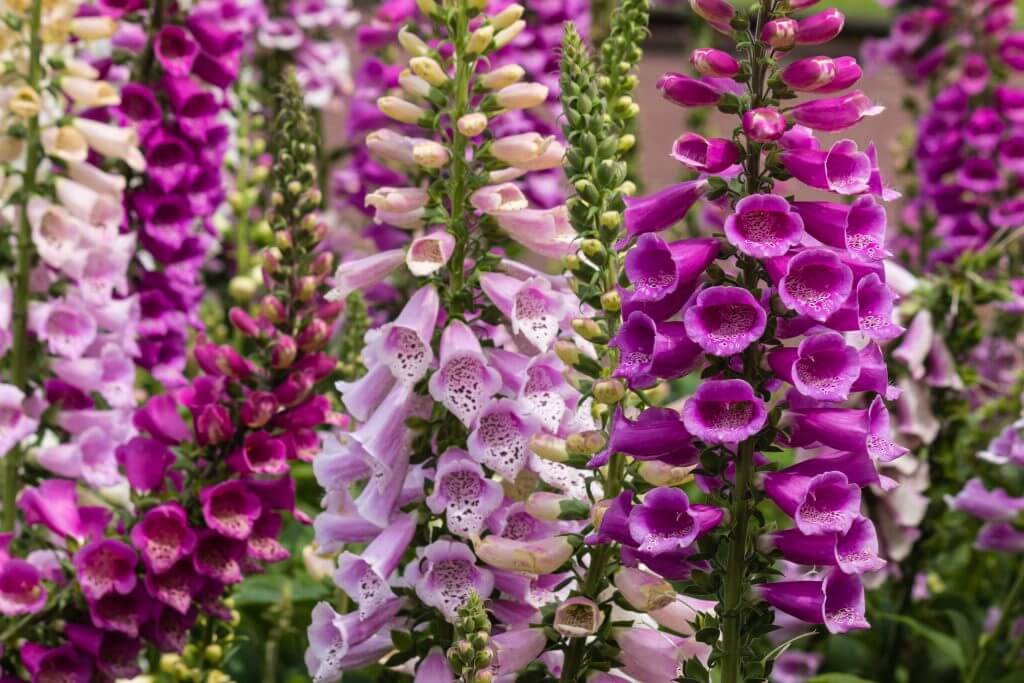
The Basics of Foxgloves
Foxgloves or Digitalis is a genus of herbaceous perennial or biennial shrubs. There are about 20 species of digitalis.
The name digitalis means “finger-like,” which refers to how the bell-shaped flowers can easily fit over a person’s fingertip.
Foxgloves are native to northwestern Africa, central and western Asia, and western and southwestern Europe.
The most popular foxglove varieties are biennial, but there are perennial foxgloves too.
Digitalis blooms grow from a tall and tubular spike. The flowers come in different colours, usually in varying shades of purple and pink, but there are also yellow and white.
Foxglove efflorescence comes out in either late spring or summer, depending on the variety.
Foxgloves contain chemicals that are extracted and processed for medicinal purposes such as for heart medications.
However, take note that every part of the foxglove plant is poisonous and should never be directly ingested. Keep foxglove plants away from children and pets.
Some symptoms of foxglove or digitalis toxicity include nausea, diarrhea, vomiting, vision issues such as seeing yellow or blurred outlines, abnormal heart rate, seizures, and more.
Digitalis purpurea
Also known as the common foxglove.
This biennial plant is the most popular specie of digitalis and native to the temperate parts of Europe and some parts of North America.
Its vivid flowers have different marks and spots, and usually come in various shades of pinks and purples, but some are yellow or white.
The flowering stem of this foxglove develops in its second year, in early to late summer, and can grow to about 3 to 6 feet (1 to 2 metres) tall. Some can grow taller.
Its woolly leaves are arranged spirally and grow to about 4 to 14 inches (10 to 35 cm) long, and 2 to 5 inches (5 to 12 cm) wide.
Bees love the flowers of this foxtail.
This digitalis is also known to self-seed to grow new plants. The fruit capsule will split open at maturity and release a lot of very tiny seeds which are about 0.1 to 0.2 mm.
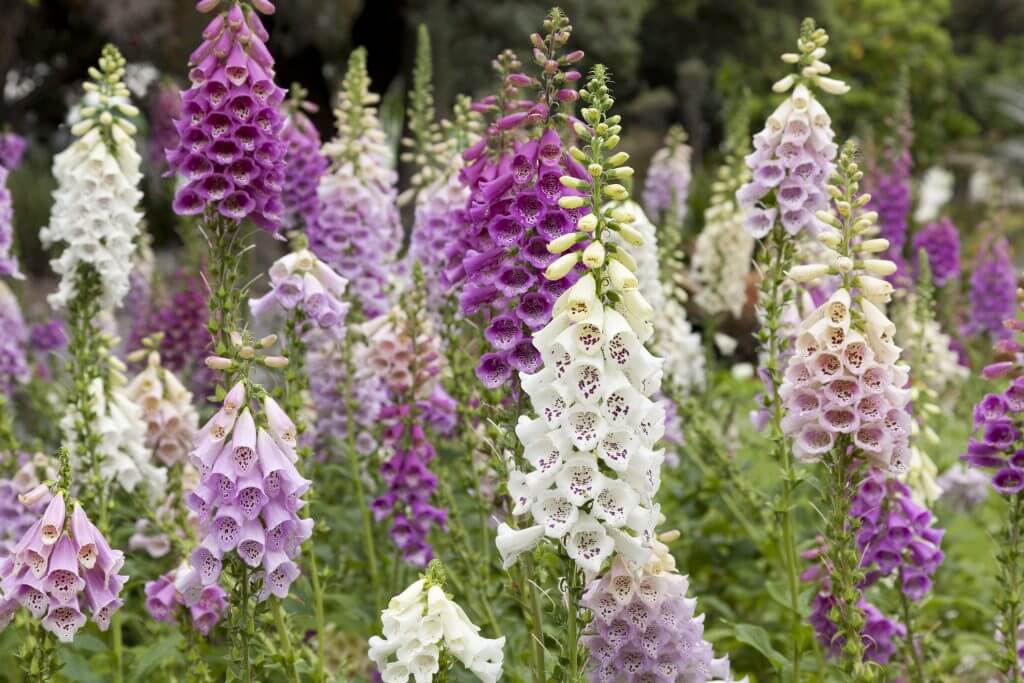

Digitalis canariensis
Also known as Canary Island foxglove.
The Canary Island foxglove are evergreen shrubs that can grow to about 5 feet (1.5 metres) tall.
Its leaves are lanceolate-ovoid and arranged in a rosette at the upper part.
This foxglove has red-orange flowers of about 1 to 1.2 inches (2.5 to 3 cm), considered bigger than most foxgloves. The blooms have short petals, and remarkable upper lip and lower lip.
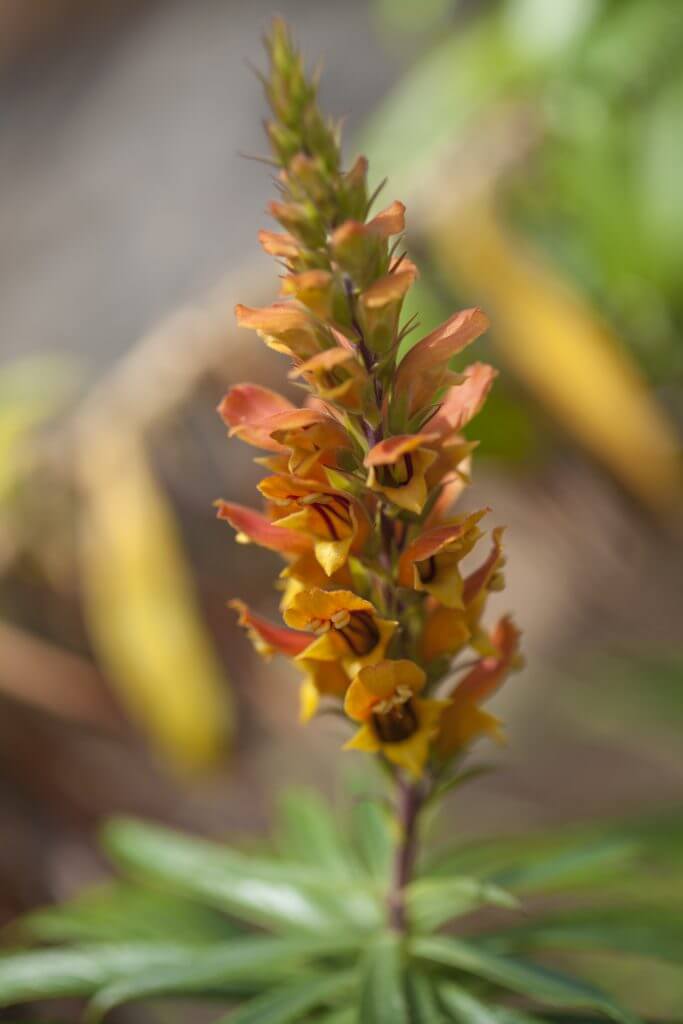

Digitalis ciliata
Also known as hairy foxglove or ciliata foxglove.
This foxglove is a native to the mountainous terrains of Caucasia where it can be found naturally in pastures, meadows, forest edges and slopes.
As the name suggests, this foxglove has tiny “hairs” which are noticeable at the upper and lower lips of its pale-yellow corolla.
Its green lanceolate leaves have an alternate pattern. The leaves are very toxic but are used for medicinal purposes. This herb can grow to 1 to 2 feet (30 to 60 cm) tall.
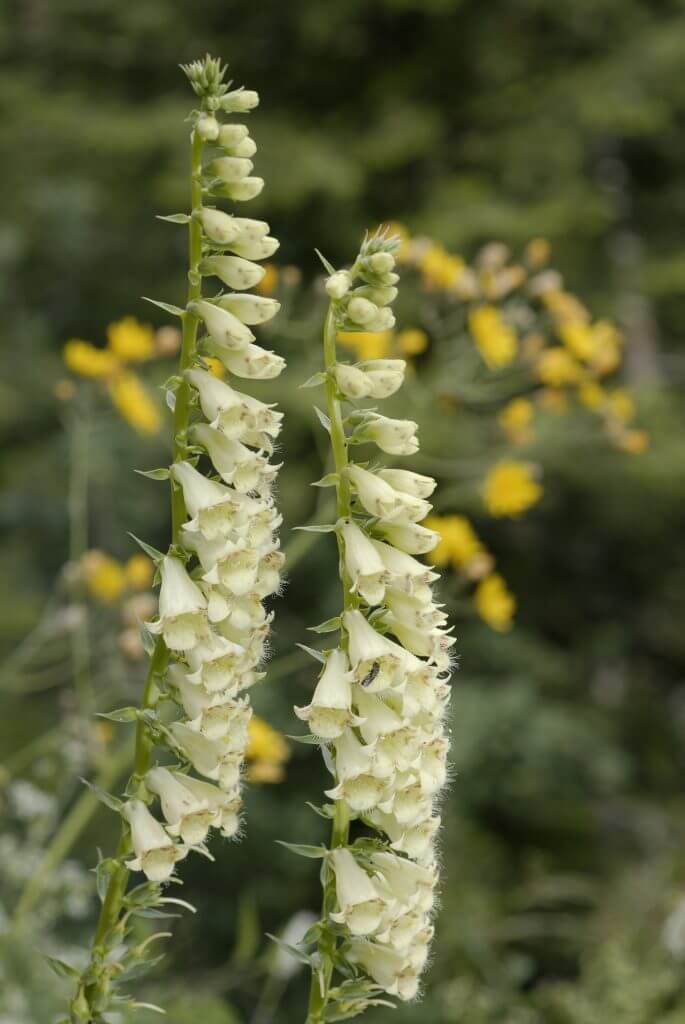

Digitalis davisiana
This foxglove is native to the Eastern Mediterranean Basin and Turkey.
It can grow up to 28 inches (70 cm) tall and 12 inches (30 cm) wide.
Its green lanceolate leaves are finely toothed and hairless and are about 3 to 5 inches (7 to 12 cm) long.
Its flowers are pale yellow with orange veins and are about 1.25 to 1.5 inches (3 to 4 cm).
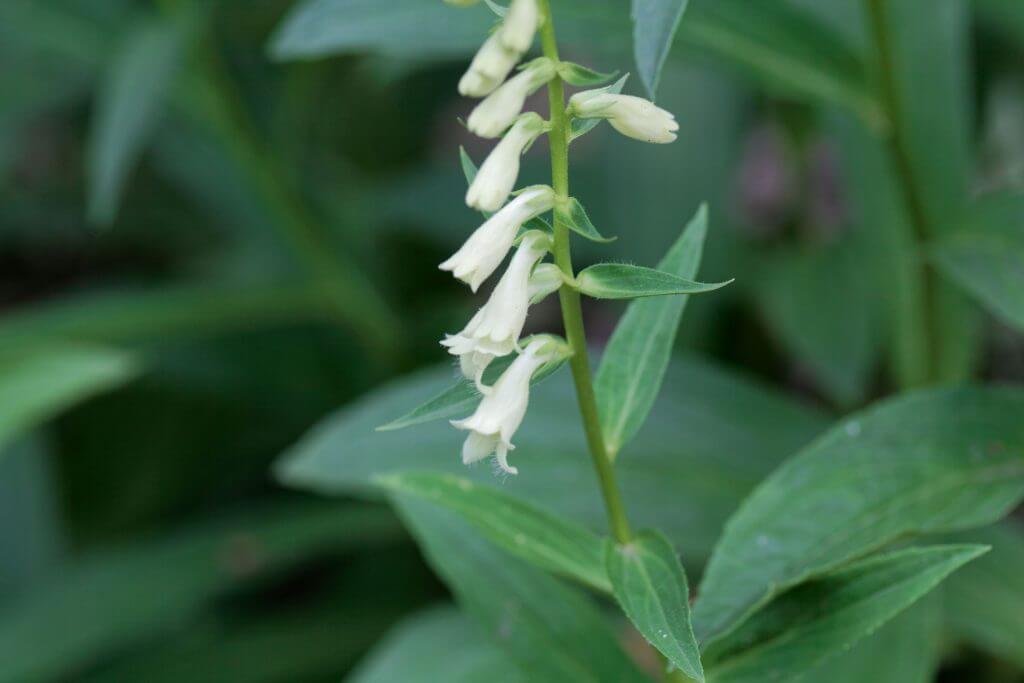

Digitalis ferruginea
Also known as rusty foxglove.
This biennial or short-lived perennial foxglove plant is native to Romania, Hungary, Turkey, and the Caucasus.
It can grow up to almost 4 feet (1.2 metres) tall and has dark green oblong leaves that grow in a rosette.
The rusty foxglove got its name for its inflorescence that is brown and looks almost like rust.


Digitalis grandiflora
Also known as yellow foxglove, large yellow foxglove, or big-flowered foxglove.
This herbaceous perennial foxglove is native to warm bushy slopes of Asia and southern Europe. They also grow in areas left after logging.
The yellow foxglove has shiny green veined leaves. This plant can grow to about 28 to 47 inches (70 to 120 cm) tall.
This foxglove’s flowers are usually pale yellow with orange or brown spotting inside and can grow to about 1 to 2 inches (3 to 4 cm), considered large for a foxglove.
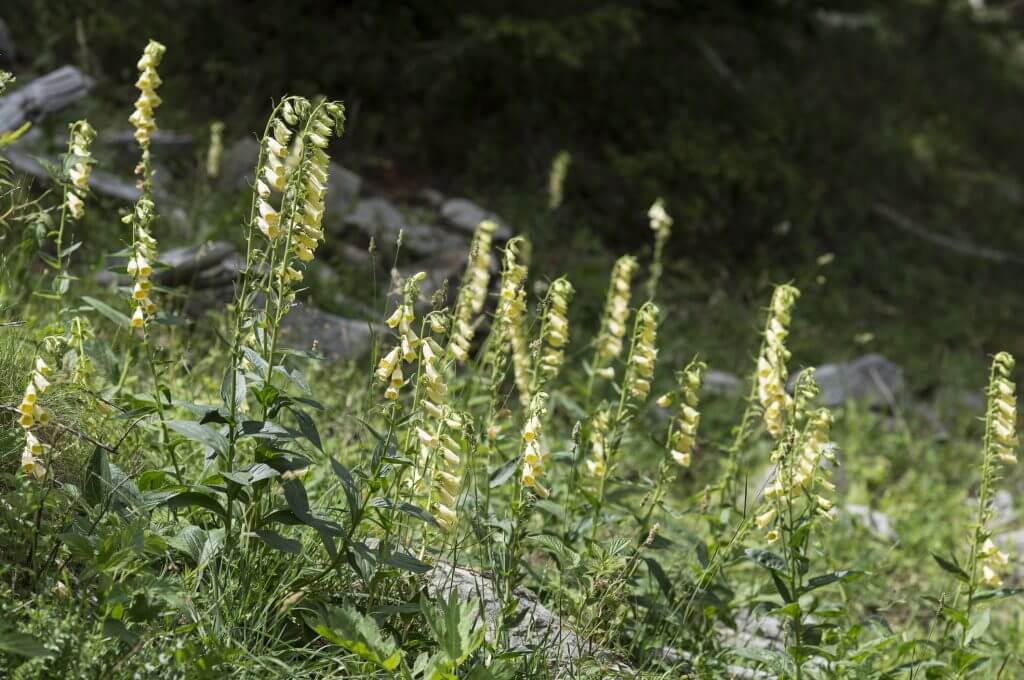

Digitalis laevigata
Also known as giraffe foxglove or Grecian foxglove.
This perennial foxglove is native to the southern parts of Europe. It can grow to about 28 to 35 inches (70 to 90 cm) tall.
The flowers of the giraffe foxglove bloom in spring and are orange or yellow-brown with white lower lip. The interior is speckled and has purple veins.
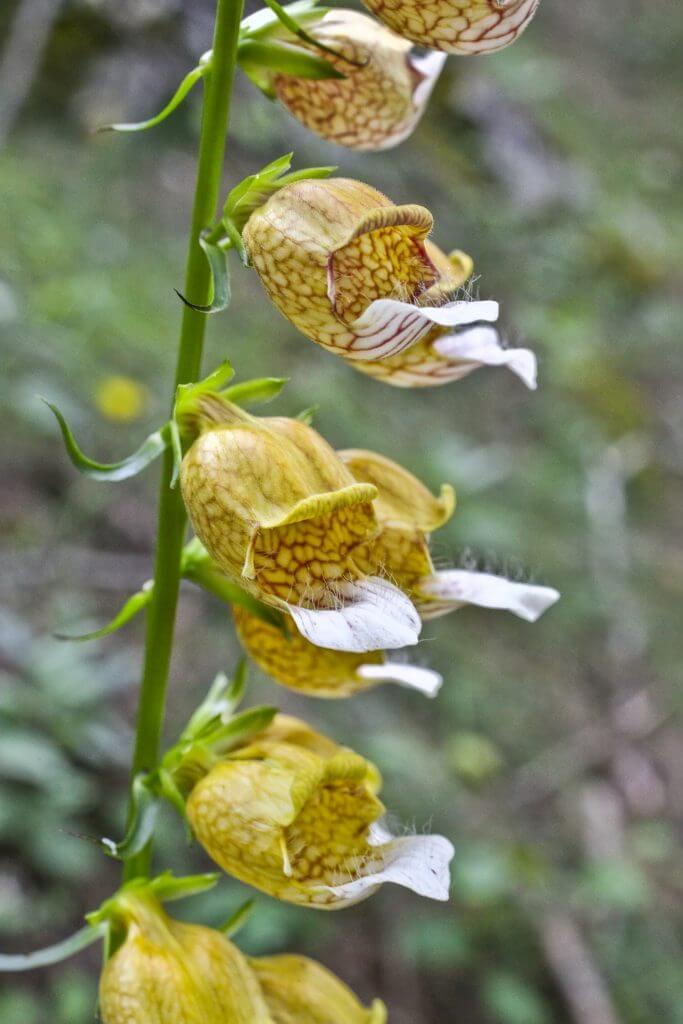

Digitalis lanata
Also known as Grecian foxglove or woolly foxglove.
This foxglove can be biennial or perennial. It is native to Eastern Europe and can grow to about 13 to 16 inches (33 to 66 cm).
This foxglove’s green leaves are woolly and veined, covered with white hairs underneath.
The stems of the woolly foxglove have a purple tinge, and the flowers are creamy-white with purplish-brown netting and broad lip.
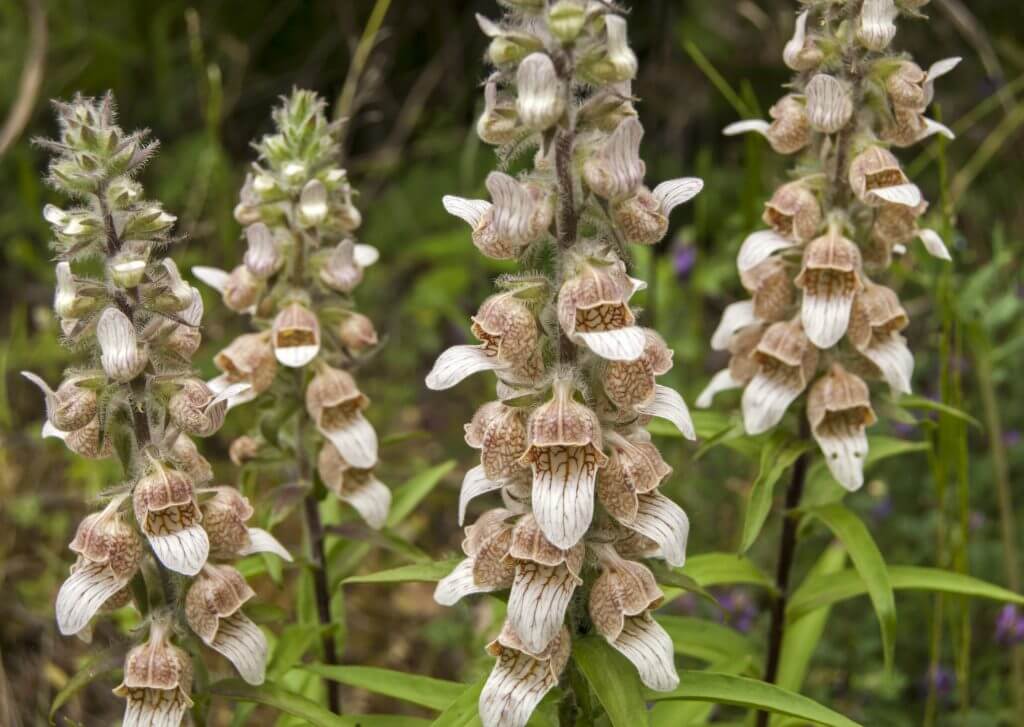

Digitalis leutea
Also known as small yellow foxglove or straw foxglove.
This foxglove is native to North West Africa and the western and southern parts of Europe.
It is herbaceous and either a perennial or biennial, growing up to 3.3 feet (1 metre) tall.
It has tiny yellow inflorescence with brown spots inside the corolla, and blooms in spring and early summer. Sometimes some flowers may appear in late summer to autumn.
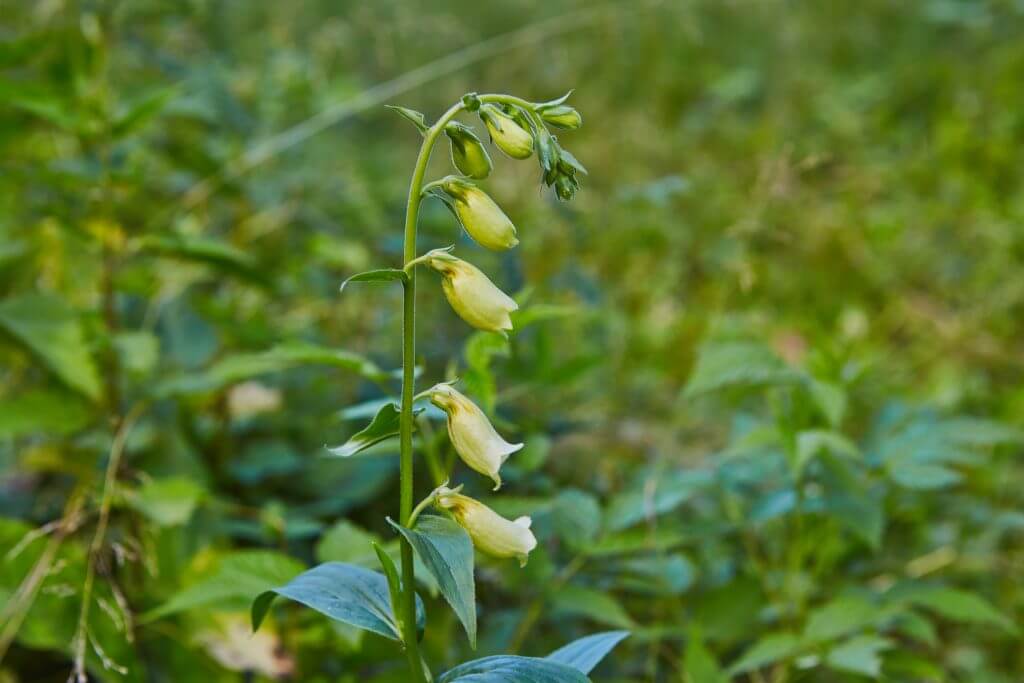

Digitalis obscura
Also known as willow-leaved foxglove or sunset foxglove.
This perennial woody foxglove is native to Africa and Spain and is known to attract hummingbirds.
It flowers grow to about 1.5 inches (3.8 cm) and can vary in colour from yellow-green to rusty dark orange with red veins and spots.


Digitalis parviflora
Also known as small-flowered foxglove.
This short-lived foxglove is either perennial or biennial and native to Northern Spain and can grow up to 24 inches (60 cm).
The blooms of the small-flowered foxglove are rust-red and come in late spring or early summer.


Digitalis thapsi
Also known as Spanish digitalis, Spanish foxglove, or fingerhut foxglove.
This foxglove is native to Spain and has pink flowers.
Its leaves are yellow-green and ovate to oblong, and the whole plant is covered with tiny hairs, making the fingerhut foxglove appear soft.
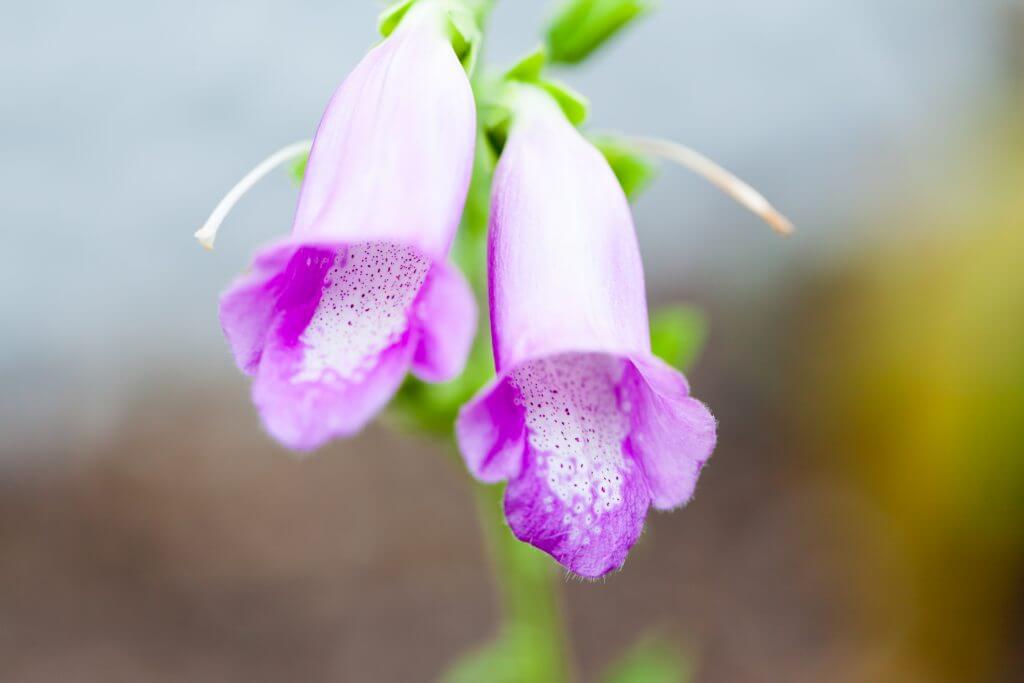

Planting Your Foxglove
Foxgloves seeds are usually planted in spring to summer. If you have existing foxgloves, you can allow them to drop their seeds naturally as they have an abundance of seeds.
When planting from seed, choose a high-quality seed compost. Just place the foxglove’s seeds on top of the seed compost and press lightly. Take care not to cover the seeds because foxglove seeds need light to germinate.
Depending on the weather and soil conditions, it could take about 2 to 3 weeks for the seeds to germinate. Foxglove seeds germinate at around 70 to 80 °F (21 to 27 °C).
Once the seedlings grow, give them about 18 inches (45.7 cm) of space in between.
Young foxglove can be planted outside in autumn, or spring if they are not big enough to be planted outdoors in autumn.
Most foxgloves can be planted in full sun to deep shade, depending on the species. However, some species like d. obscura or d. thapsi can be grown in full sun.
Plant them in rich and slightly acidic soil, around a pH of 5.8 to 7.2. Some digitalis can tolerate soils up to pH of 8.
Depending on the variety, foxgloves can be planted in sandy, clay, peat, loamy, or a combination of different types of soils, as long as it is well-draining.
If you will plant young or grown foxgloves outdoors, plant in either autumn or spring. Make sure to give your foxgloves some space in between, about 2 feet (60 cm), because overcrowding will stunt their growth.
Once planted outside, water thoroughly about once a week until the foxgloves are established.
Caring for Your Foxgloves
Mature and established foxgloves are usually drought-tolerant, but would probably not do so well in hotter temperatures like those above 90 °F (32 °C).
When watering growing foxgloves, make sure to keep the soil moist but not soggy. Keep the soil moist from one inch below the surface (you can stick your finger in the ground to test).
Protect your foxgloves from direct hot sunlight and extreme winds.
Feed your foxgloves with a slow-release fertiliser, taking care not to get the fertiliser on the crown and foliage. Low rate fertilisers are ideal because higher rates could encourage root rot.
Another option to give your foxgloves its needed nutrients is to apply about an inch (2.5 cm) of compost in spring.
Mulch in autumn to avoid heaving in winter.
If you want to propagate your foxgloves from seeds, do not deadhead to allow the plant to reseed naturally.
Common Problems with Foxgloves
One essential thing to take note is that foxgloves are highly toxic. The bright flowers and berries are very attractive, especially to small children. Do not plant foxgloves where children and pets can have access to them.
The larvae of foxglove pug, named for its preference to digitalis, will eat the flowers of your foxglove.
Some species of Lepidoptera, which includes the moth called lesser yellow underwing, would consume the leaves of foxglove plants. Apply the appropriate pesticide to address foxglove pest issues.
[elementor-template id=”4604″]
[elementor-template id=”6387″]
